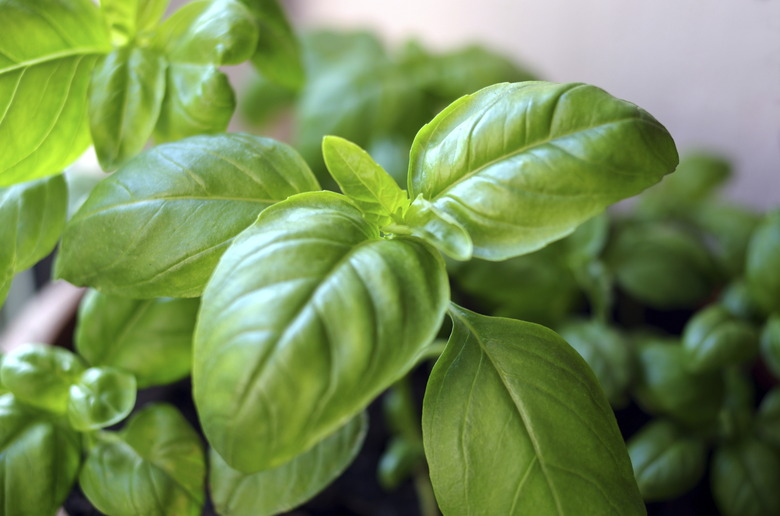Can Basil Plants Survive In Freezing Temperatures?
Basil (Ocimum basilicum) grows best during the warm, frost-free days of summer. It grows as an annual and dies after flowering or after frost. Unexpected late spring frosts pose the greatest danger, but an early fall frost can also stop production.
basil-plant-turning-brown.html'>Basil (Ocimum basilicum) grows best during the warm, frost-free days of summer. It grows as an annual and dies after flowering or after frost. Unexpected late spring frosts pose the greatest danger, but an early fall frost can also stop production. Understanding basil's temperature needs and planning ahead for a frost can keep your basil both alive and productive.
Staying Warm
Basil grows best when daytime temperatures are consistently above 70 degrees Fahrenheit and night temperatures stay about 50 F, but it can survive and tolerate lower temperatures if there is no frost. When the temperature drops to 36 F, it can result in frost damage or kill the plant, because the temperature near the ground can drop below freezing because of heat loss from the ground. Basil plants suffering from frost damage quickly wilt and the foliage dies, although it remains green. The roots rarely survive even a light frost, so you will need to buy a new basil if it freezes.
- Basil (Ocimum basilicum) grows best during the warm, frost-free days of summer.
- Basil plants suffering from frost damage quickly wilt and the foliage dies, although it remains green.
Under Cover
Protection from a late spring frost may help newly planted basil survive the cold, but in fall it's best to harvest the remainder of the basil before a frost kills the plant. To protect a basil plant, cover it with an upturned bucket or pile straw around it to insulate both the leaves and the roots. When covering basil, any leaves in contact with the covering, with the exception of straw, can still suffer damage, so use a large bucket. Remove any covering as soon as temperatures rise, otherwise the basil may overheat.
Protecting the Young
Spring frosts threaten basil seedlings. Starting the seedlings indoors instead of directly in the garden keeps them protected until all frost danger has passed, but still allows you to get a head start on growing the herb. Start basil seeds in seedling pots four weeks before the last expected frost, and then plant them outdoors two weeks after the last expected frost date. When growing from seed, use pots with bottom drainage and a sterile soil. Basil germinates best when temperatures are between 65 and 85 F.
- Protection from a late spring frost may help newly planted basil survive the cold, but in fall it's best to harvest the remainder of the basil before a frost kills the plant.
- When covering basil, any leaves in contact with the covering, with the exception of straw, can still suffer damage, so use a large bucket.
On the Move
If your area has unpredictable spring and fall frosts, consider growing it in pots so you can bring the basil indoors when necessary. The pots must have at least one bottom drainage hole so the soil can drain. You can set pots outdoors or sink them into the garden bed during warm weather, and then place them in a window that gets full, all-day sun during cold weather. Arrange pots so the leaves don't 't touch window glass, because freezing air on the outside of the glass can damage the leaves. Pot-grown basil may dry out more quickly than garden soil. Check the soil daily and water when the top 1 inch feels dry. Basil is an annual so it will eventually die and need to be replaced, even if it's not exposed to frost.
- If your area has unpredictable spring and fall frosts, consider growing it in pots so you can bring the basil indoors when necessary.
- You can set pots outdoors or sink them into the garden bed during warm weather, and then place them in a window that gets full, all-day sun during cold weather.
